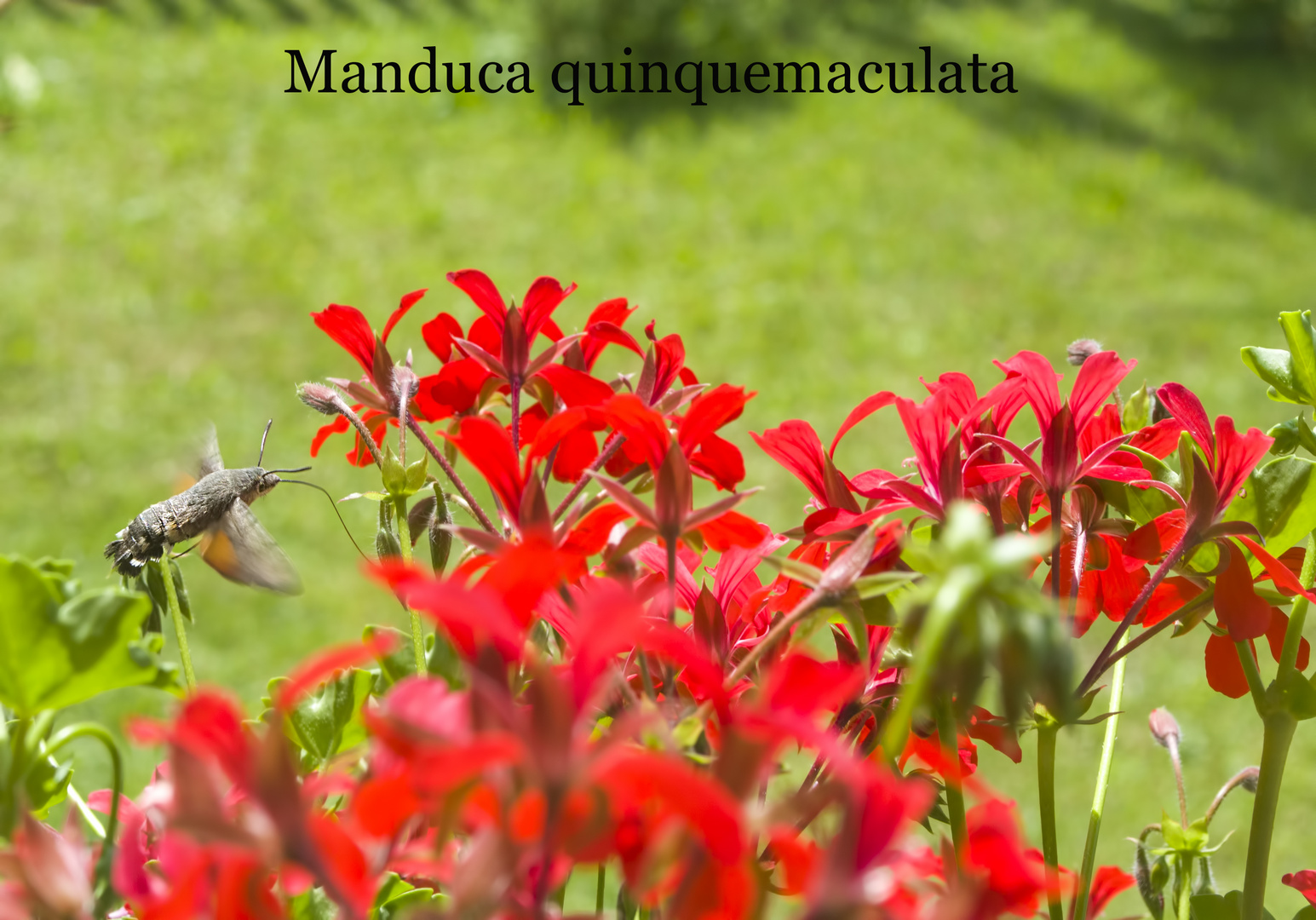Manduca quinquemaculata
Manduca quinquemaculata
Manduca quinquemaculata (Haworth, 1803)
Family: Sphingidae
Subfamily: Sphinginae
Identification: Abdomen usually has 5 but sometimes 6 pairs of yellow bands. Forewing is blurry brown and gray. Hindwing is banded with brown and white and has 2 well-separated median zigzag bands. Forewing fringes are grayish, not distinctly spotted with white.
Wing Span: 3 9/16 - 5 5/16 inches (9 - 13.5 cm).
Life History: Adults fly at dusk, and females deposit eggs singly on the upper surface of host plant leaves. The caterpillars are called Tomato Hornworms and each has a black horn at the end of the abdomen. Caterpillars have huge appetites for leaves and fruits and can defoliate plants quickly. Fully-grown caterpillars pupate and overwinter in soil burrows.
Flight: . Several broods from February-October in Florida and from April-October in Louisiana, at least two broods from May-October in the rest of the range.
Caterpillar Hosts: Potato, tobacco, tomato, and other plants in the nightshade family (Solanaceae).
Adult Food: Nectar from flowers including Japanese honeysuckle (Lonicera japonica), petunia (Petunia hybrida), bouncing bet (Saponaria officinalis), tobacco (Nicotiana), and phlox (Phlox).
Habitat: Tobacco fields, vegetable gardens, and wherever host plants are found.
Range: Mexico north throughout most of the United States and occasionally southern Canada, but it is uncommon in the Southeast and the Great Plains.
Conservation: Not usually required.
NCGR: G5 - Demonstrably secure globally, though it may be quite rare in parts of its range, especially at the periphery.
Management Needs: Caterpillars are pests on tomato and other plants in the nightshade family (Solanaceae).
Taxonomy Notes:










Commenti 0
Cancella commento
Eliminare commento e risposte